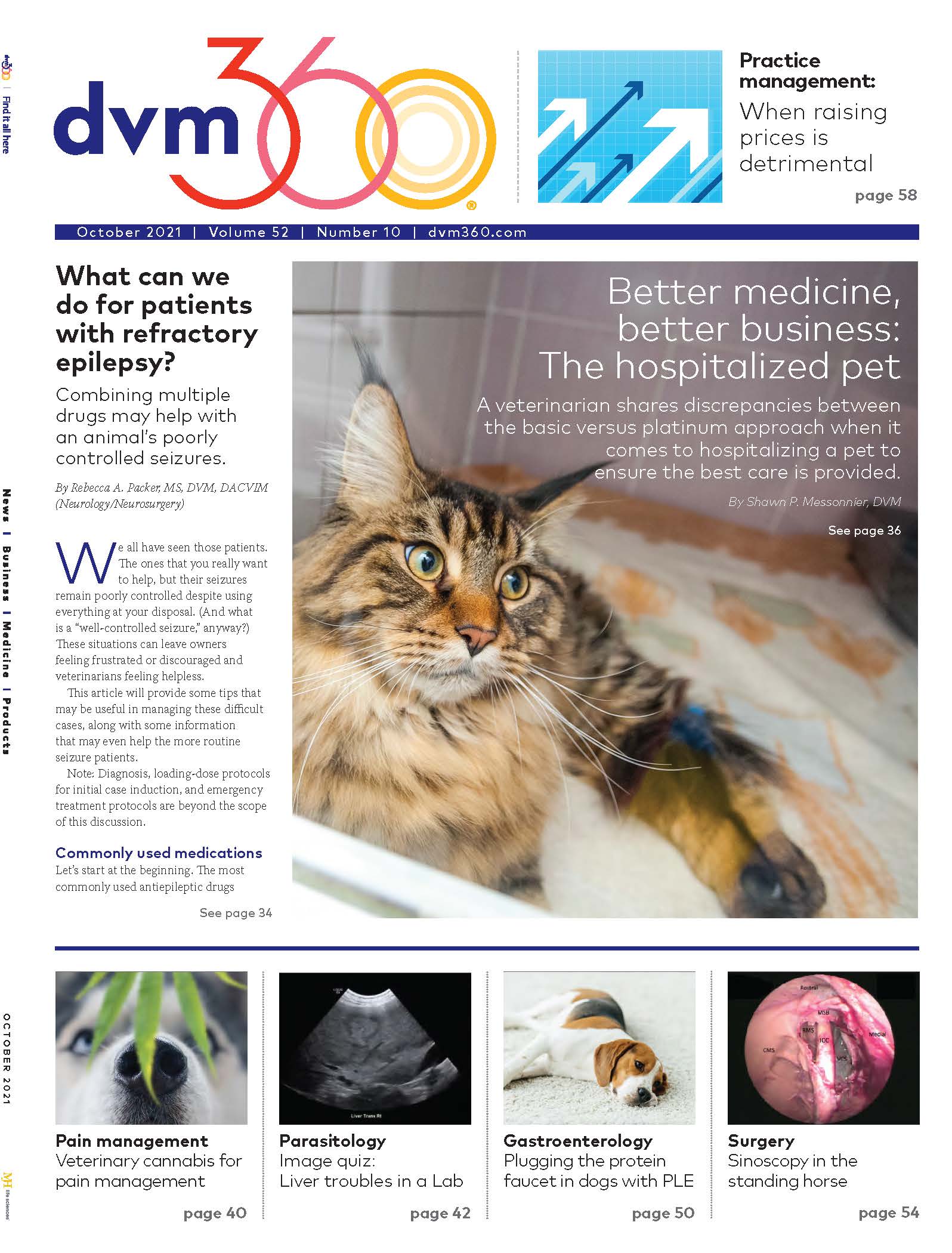Exercise is key to weight management in cats
Physical activity and creative mealtime strategies can support weight loss, boost quality of life, and bond cats more tightly with their humans.
Cutting calories is the go-to strategy for most pet owners trying to slim down their pets, but exercise is often given less weight, particularly for cats. According to Fetch dvm360® presenter Deborah Linder, DVM, DACVN, a veterinary nutritionist and a research assistant professor at Tufts University Cummings School of Veterinary Medicine, cats tend to “exercise” at their own discretion.
During her Friday session, “Weight Loss in Cats: How Physical Activity Can Be Your Secret Weapon”, Linder explained that cats burn calories through natural feline behaviors, such as exploring their territory, stalking prey, navigating varying surfaces and heights, and socializing with other cats. Those kept indoors and unable to engage in these activities may be more prone to packing on pounds.
There is no match for free living. However, indoor forms of exercise—combined with calorie limitations—can keep cats fit, according to Linder. She said, exercise is our secret weapon. But owners sometimes get defensive when prodded to discuss weight loss for their pets, leading them to eschew fitness programs. Linder says this can be because pet owners must acknowledge that their pet is overweight, it is not good for their pet, and those owners may have some guilt over possibly contributing to that.
For these sensitive client conversations, she advises veterinarians to take a neutral, nonjudgmental stance that focuses on quality of life rather than obesity.
Lifestyle assessment
Fashioning a weight management program that incorporates physical activity begins with an overall assessment of both cat’s and owner’s lifestyles. The first step is to determine the cat’s eligibility for exercise. Does the cat have health issues, such as asthma or orthopedic problems, that would restrict exercise? How about the cat’s body condition and muscle condition scores? For obese and/or muscle-wasted cats, medical workups and graduated exercise introductions may be indicated.
Second, obtain a detailed history that probes the cat’s current and previous activity levels, and clarifies what types and degrees of activity are possible in a particular household. For instance, does the home have spatial limitations? Are there rooms the cat is not allowed to enter?
Third, try to discern the owner’s level of commitment to controlling the cat’s weight and providing conditioning activities. Inquire about his or her goals for the cat.
The key to the cat’s heart
Interview the owner to determine what motivates the cat, and tailor an activity program around this. For the food-motivated cat, what are its high-value food items? If kibble, the owner can use puzzle toys, which require the cat to move about and utilize its natural agility in order to obtain crunchies. Or the owner can spread kibble throughout the house so the cat must amble about in pursuit of it. For wet food lovers, the owner can open the can and walk up and down stairs with it to entice the cat to follow in order to procure the meal.
For the hunter, pen lights and electronic toys, such as battery-operated mice, can charge up the energy. Cats that bore of these can be incentivized with hunting feeders that release kibble when batted around.
The adventuresome cat can be given outdoor exercise safely, perhaps with leash walking. While many cats eschew physical restraint, treats can be used to positively reinforce cooperation with donning harnesses.
Fighting the fight against fighting fat
While Leftie took well to the food-driven workouts, not every cat does. For naturally sedentary kitties, exercise beginners, and for the obese, she advocates gradual increases in low-intensity activities, such as walking around the house. For cats with physical impairments that restrict activity, physical therapists can engage them in appropriate activities, such as treadmill walking and swimming.
Although physical activity can drive down body mass, Linder reminded the audience, it does not negate the importance of calorie control—or math. If an activity that burns 10 calories requires 100 calories of treats, she said, it defeats its purpose.
One way to bend the math in the right direction is to use low-calorie edibles when incentivizing activities. Chosen treats should not exceed 1 kcal/piece. She added that cats are texture-driven and can often be motivated with veggies of the semisoft variety, such as zucchini, or of the moist, crunchy type, like sweet red peppers.
Linder said that once a plan that both elevates activity levels and cuts/controls calories is in place, client follow-up is key. How does the client feel? How is the cat responding? What are the challenges? One of the most common complaints she hears now, as more people are working from home, is that these cats disrupt their owners’ work and sleep with their demands for food. This is where puzzle toys and timed food dispensers come into play.
Puzzle toys have the ability to shift the cat’s focus from the pet owner giving the food to the inanimate object giving the food. So, too, veterinarians should focus their cat owners on exercise and calorie control, which are key ingredients for physical conditioning, environmental enrichment, and feline-human bonding.
